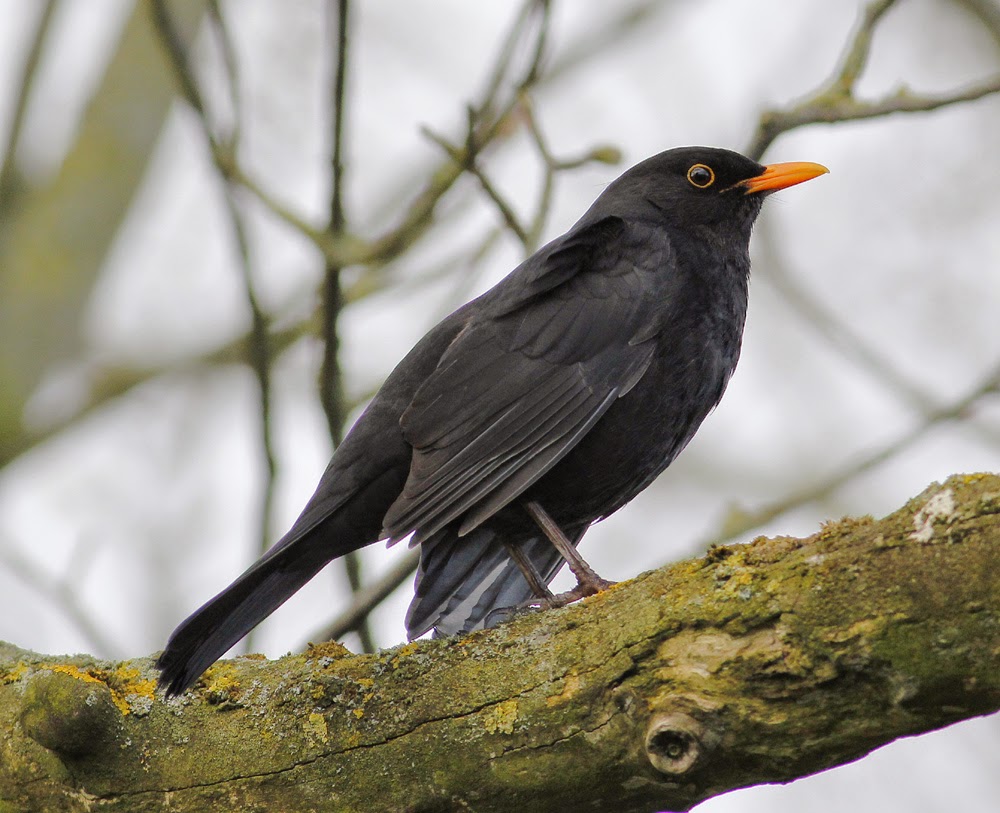Plan A was to be a coastal walk soon after dawn to seek out more Wheatears and anything else lurking unfound by Spring birders. A bitingly cold north easterly wind soon put paid to that idea whereby I found myself in the car heading north with the heater and heated seat at “max”, but as usual the window turned down. It is somewhat mystifying but occasionally I see people apparently bird watching, sitting in their car with the windows up and the radio booming away; I wonder how they ever locate birds?
Plan B found me at Conder Green for a look on the pool and the roadside creeks, with hopefully a few Spring migrants. The 2 Spotted Redshanks have wintered here. Now they are in the process of acquiring their summery black plumage it will be interesting to see when exactly they head off to Scandinavia/Asia to breed.
Spotted Redshank
Spotted Redshank
There was a lot of long range birding today with over 200 Black-tailed Godwits feeding on the distant side of the pool for a while before flying off to the estuary. Not long after a similar number came back to the pool only to then do exactly the same by returning to the area of the River Lune. Mostly the godwits were in brick-red plumage with a small number of obvious second year birds and yet other intermediates. One fed in the creek for a while, distant as ever. One Grey Heron in the creeks also, with c15 Redshank and 1 Curlew.
Black-tailed Godwit
The pool is pretty sparse for birds now, still suffering from excessive water levels caused by the wet, windy and tide-filled winter. As a diving species Tufted Ducks appear to like it, with 26 counted today as opposed to dabbling Wigeon with just a singleton noted.
Tufted Duck
8 Oystercatchers are in residence seemingly paired up and waiting for good sized stretches of stones, pebbles and suchlike where their eggs can remain undetected. Not much chance of that on a favoured Oystercatcher island which is normally several times bigger than at present and so rather restricts their choice of a nest site.
Oystercatcher
A “few” Swallows and Sand Martins headed north with other visible migration restricted to one or two Lesser Redpoll overhead. Singing Reed Bunting and Greenfinch along the hedgerow.
A pit stop at Braides Farm gave 26 Golden Plover, 8 Linnet and 4 Swallows heading east.
Finally it was Fluke Hall where the wind had not abated so I concentrated effort on the woodland. The male Kestrel was in the same location as normal and then I found out why. He dropped from the fence post to all of two yards away and then came back up with a good sized mammal. After taking a portion of the food for himself he flew off to the nearby nest box to present the animal to the female, the latter presumably now on eggs. It’s a big prey item for a smallish Kestrel and another long distance picture - 400mm x 1.4 converter.
Kestrel
The woodland and hedgerow produced 2 Great-spotted Woodpecker, 20+ Blackbirds, 2 Song Thrush, 2 Blackcap, 2 Willow Warbler, 1Chiffchaff, and the arrival of one singing Whitethroat fresh from Africa.
Whitethroat
In the field nearest the sea wall there’s a build-up of spring Linnets and a few Meadow pipits, about 100+ Linnets and 4/5 pipits today, flushed in all directions by a marauding Sparrowhawk.
So Plan B didn’t turn out too bad after all. Tune in soon to see what’s scheduled next for Another Bird Blog.
Linking today to Stewart's World Bird Wednesday.
Linking today to Stewart's World Bird Wednesday.






































































